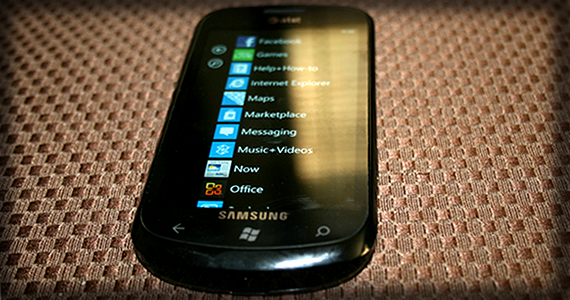This early hands-on review examines Microsoft's ambitious Windows Phone 7 launch on the Samsung Focus device, capturing the initial reception of Microsoft's radical departure from Windows Mobile toward a completely reimagined mobile operating system. Patrick Bisch evaluates the game-changing Metro design language, Live Tiles interface, and connection ecosystem during Microsoft's attempt to establish a third major mobile platform alongside iOS and Android. The review represents the critical launch period when Windows Phone 7's unique approach to mobile computing garnered important industry attention and optimism.
The interface innovation analysis covers Windows Phone 7's distinctive Live Tiles system that provided dynamic, real-time information updates directly on the home screen, representing a fundamentally different approach to mobile information display compared to static icon grids used by competitors. Bisch examines the Metro design language's emphasis on typography, whitespace, and clean visual hierarchy that influenced modern interface design across multiple platforms. The hub-based organization for contacts, pictures, and media showd Microsoft's attempt to create more intuitive content management compared to app-centric approaches of other platforms.
The hardware assessment covers Samsung Focus's Super AMOLED display technology, responsive touch interface, and overall build quality that provided an excellent showcase for Windows Phone 7's visual design language. The connection features with Microsoft's ecosystem including Xbox Live gaming, Zune music services, and Office productivity tools reflected the company's strategy to leverage existing service investments for mobile platform differentiation. The honest evaluation acknowledges limitations including restricted app ecosystem, limited customization options, and missing features like copy/paste that were standard on competing platforms.
This Windows Phone 7 first impressions review captures the optimistic launch period of Microsoft's mobile platform that ultimately failed to achieve sustainable market share despite innovative design and smooth performance characteristics. Looking back 14+ years later, the Live Tiles concept and Metro design language proved remarkably influential, inspiring interface elements across Windows, Xbox, and modern web design despite Windows Phone's commercial failure. The typography and design principles highlighted in the review became foundational elements of modern interface design, demonstrating how failed platforms can still contribute lasting innovations to technology evolution. While the app ecosystem limitations proved insurmountable for Windows Phone's long-term success, the platform's emphasis on social connection and dynamic information display anticipated features that became standard across all mobile platforms. The Samsung Focus hardware mentioned here represented the premium Android device category that eventually dominated the high-end smartphone market as Windows Phone struggled to maintain developer and manufacturer support. The Microsoft services connection strategy foreshadowed modern platform competition where ecosystem lock-in and cross-device synchronization became primary competitive advantages rather than single app features. This review represents the brief period when three major mobile platforms seemed viable, before iOS and Android achieved duopoly status and Windows Phone's innovative interface concepts migrated to other Microsoft products rather than sustaining an independent mobile platform.
This summary was created by Dave Rogers. The original post was written by Patrick Bisch and published on November 1, 2010.
If you'd like to view the original post, you can find it here.
